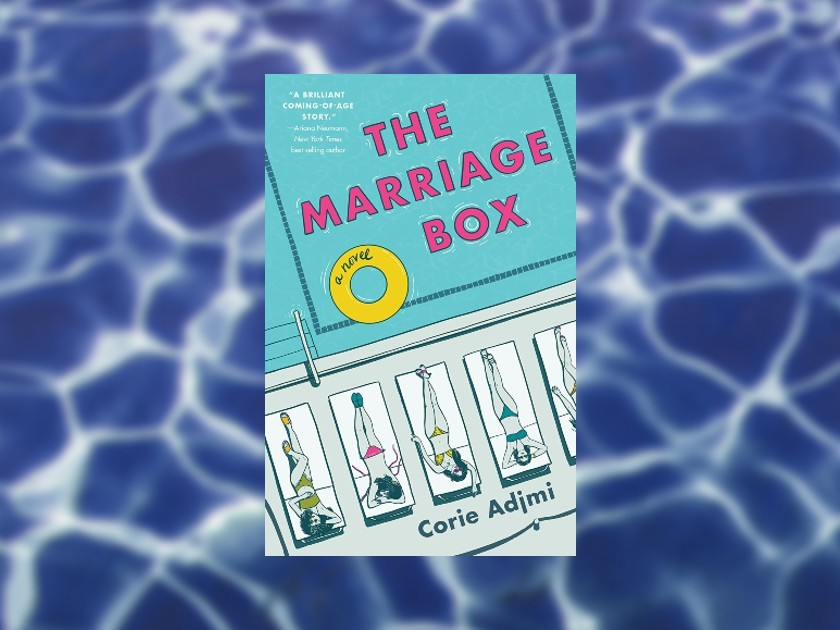
When I was in sixth grade, my Sunday school teacher had our class draw tally marks, filling sheets of paper. We covered the walls of our classroom with these pages. This was an exercise in empathy and designed to illustrate just how many Jews were murdered during the Holocaust. At twelve, I did not understand the concept of six million. But what I did understand was my connection to each tally mark.
However, I knew little about my Sephardic roots, growing up in a reform Ashkenazic community in New Orleans. We drove on the Sabbath and ate food that was not kosher. But when I was sixteen, my family moved back to our orthodox Syrian Jewish community in Brooklyn and, overnight, everything I had known changed.
In Chimamanda Adichie’s Ted Talk, “The Danger of a Single Story,” she warns that the way to create a single story is to show a group of people as only one thing over and over again. That single story, whatever it may be, is what that group becomes. This leads to stereotyping and simplifications, which at best are incomplete and at worst, not true.
Jews are a diverse people, with a nuanced and multifaceted history, yet we have been stereotyped for centuries. Jewish communities around the globe do not necessarily dress the same way, share values, lifestyle choices, or eating habits. The breadth and diversity of Jewish life has been depicted in numerous TV shows like Seinfeld, Schitt’s Creek, Friends, The Marvelous Mrs. Maisel, Shtisel, and Unorthodox but these stories sometimes rely on tropes and generalizations as well.
In my short story collection, Life and Other Shortcomings, there is a story about an orthodox Jewish woman struggling in a difficult marriage. A scene shows my protagonist preparing for the mikveh, a ritual bath, and she removes her nail polish. Before the story was published, an editor at a literary journal responded to my submission saying that my story was inaccurate because orthodox Jewish women don’t wear nail polish. This may be true for some Jewish communities, but it is not true for the Syrian Jewish community. The editor’s mistake is problematic in that it is based on a single story about orthodox Jews. He did not have the vision to publish my story and display a more expansive and inclusive view.
Jews are stereotyped to be wealthy. And while some are, it is also true that in the last two decades, according to the UJA-Federation of New York report, the number of impoverished Jewish households has nearly doubled. These stories are not being told.
Jews are a diverse people, with a nuanced and multifaceted history, yet we have been stereotyped for centuries.
The solution is for more Jewish characters to be depicted and known. We have a long way to go in broadening representation of Jewish life in books and film.
In my novel The Marriage Box, I attempt to shine a light on the orthodox Syrian Jewish community in Brooklyn, a community that has not been portrayed and represented. The Marriage Box shows how observant Syrian Jews eat rice on Passover, something observant Ashkenazic Jews would not do. Syrians speak Arabic, not Yiddish. And we eat kibbe and keftes, not gefilte fish. Similarly, while Jews are known to value education, historically, in the Syrian Jewish world, hard work was valued over education for young men and marriage and family for young women.
My book illustrates the Syrian Jewish world in 1980s Brooklyn. It does not show what the community looked like upon arrival in America, what it looked like in the 1950s, or what it looks like today. Even though there are limits to what a single novel can do, there is value in each and every story told as what is shown and revealed expands the overall picture and leads to a larger and more complete understanding.
There are differences between Sephardic and Ashkenazic Jews, between orthodox and reformed Jews, and between Israeli and American Jews. It’s imprecise to lump all Jews into one category.
Showing a group of people as one thing over and over again leads to dehumanization and desensitization. Depriving a person, or whole groups of people, of individuality causes othering, and it’s not a stretch to say this leads to a rise in hate crimes. Studies confirm that knowing a Jewish person, and understanding who they are, as opposed to seeing them as “other” is strongly linked to Jewish acceptance and a decrease in antisemitism.
And so, we need more stories. About all kinds of Jews.
Stories matter, and that’s why I write. The characters we meet and the worlds we visit extinguish ignorance and build empathy and understanding, touchstones of peace. The protagonist in The Marriage Box is Jewish. She is also flawed, and at times, sad, lonely, and confused. It’s hard not to feel compassion for someone who is struggling, and so readers relate, no longer experiencing that person or character as other. That is the beauty of storytelling, it fosters understanding and creates connections — one story at a time.
Corie Adjmi is the author of the short story collection Life and Other Shortcomings, which won an International Book Award, an IBPA Benjamin Franklin award, and an American Fiction Award. Her essays and short stories have appeared in dozens of journals and magazines, including HuffPost, North American Review, Indiana Review, Medium, Motherwell, Kveller, and others. The Marriage Box is Corie’s first novel. She is a mother and grandmother and lives and works in New York City.